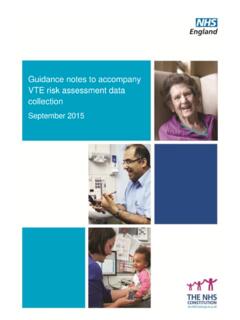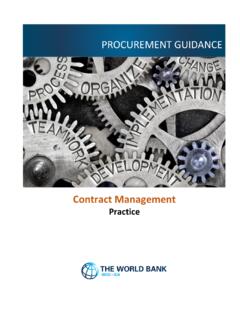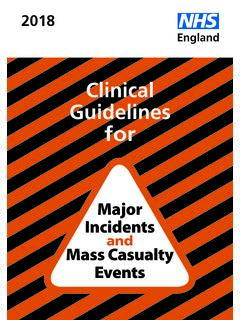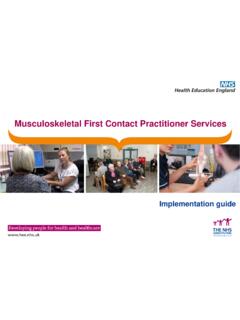Transcription of Treatment Algorithm for Multiple Sclerosis Disease ...
1 Treatment Algorithm for Multiple Sclerosis Disease -Modifying Therapies NHS England Reference: 170079 ALG. Date Published: 4 September 2018. Updated: 8 March 2019. Gateway reference: 07603. Treatment Algorithm for Multiple Sclerosis Disease -modifying Therapies 4 September 2018. Treatment Algorithm for Multiple Sclerosis Disease -modifying Therapies Contents 1. Purpose of this 3. 2. Principles of organisation of MS Disease -modifying therapy services .. 3. 3. Definitions .. 4. 4. Starting criteria common to all 4.
2 5. Suggested common stopping criteria for all 5. 6. General principles of drug 5. 7. Inappropriate 5. 8. Treatment Algorithm for single clinical episode with radiological activity .. 6. 9. Treatment Algorithm for first-line therapy of relapsing-remitting Multiple Sclerosis (RRMS) .. 7. 10. Treatment Algorithm for intolerance to first line therapy .. 8. 11. Treatment Algorithm for second-line therapy of RRMS, with Disease activity on first line 9. 12. Treatment Algorithm for Disease activity on second-line therapy.
3 10. 13. Treatment Algorithm for relapsing progressive Multiple Sclerosis .. 11. Addendum 1: Table of drug authorisation, NICE indication and NHS England positioning .. 12. Addendum 2: Indications not currently approved by NHS England, but considered by the authors .. 16. Addendum 3: Authors of the Algorithm .. 17. Addendum 4: Voting of membership .. 18. Appendix 1: Acronyms and 23. Summary of changes to this document .. 24. 2. Treatment Algorithm for Multiple Sclerosis Disease -modifying Therapies 4 September 2018.
4 1. Purpose of this Algorithm The purpose of this Algorithm is to provide a framework to aid decision-making for Multiple Sclerosis (MS) specialists and patients, to help reduce excessive variation in practice, and ensure safe and effective prescribing. It is understood that there may be situations where there is no single right' or wrong' therapeutic approach, and different experts may reasonably hold different views. This Algorithm is constrained by the regulatory status, NICE approvals and commissioning status, of the Disease -modifying drugs licensed for MS in England.
5 Other guidance on Disease -modifying drugs in MS, such as the Association of British Neurologists' guidelines1 are different in scope and may make recommendations applying to the devolved administrations, outside the geographical and National Institute for Health and Care Excellence (NICE) constraints applying to NHS England. NHS England's Neuroscience Clinical Reference Group (CRG) will review this Algorithm to reflect any new NICE Technology Appraisal guidance or approvals within 3 months of guidance publication.
6 2. Principles of organisation of MS Disease -modifying therapy services The patient should be at the centre of any service for Disease -modifying therapies. These services should be organised to optimise timely and equitable access of people with MS to Disease -modifying therapies (DMTs). Every region should make all licensed MS drugs available to all people with MS in that region. It is expected that all DMT prescribers in a region will participate in a network of audit, quality control and education. The minimum team for any prescribing service is a MS specialist consultant neurologist and a MS specialist nurse, working with support from a specialist MS centre and its multi-disciplinary team.
7 Complex cases or those where higher-risk DMTs (for instance cladribine and the monoclonal antibody therapies) are proposed, should be discussed at a multi-disciplinary team (MDT). meeting, defined as a minimum of at least two MS specialist consultant neurologists plus at least one specialist MS nurse, with access to neuro-radiology expertise. Ideally the MDT would also incorporate additional specialist healthcare professionals, including a neuropharmacist. At each prescribing centre, there should be an individual or team responsible for the governance of safety monitoring.
8 Services should be organised to facilitate collection of data for mandatory requirements (for instance, annual Expanded Disability Status Scale (EDSS) for reporting on a web-based clinical decision support system) and voluntary MS registers. This Treatment Algorithm applies to all age groups, including children. Children may receive DMTs if;. (i) they are licensed for children, or (ii) they have a recognised dose for children (for instance are cited in the British National Formulary). 1. Scolding N, Barnes D, Cader S, Chataway J, Chaudhuri A, Coles A, Giovannoni G, Miller D, Rashid W, Schmierer K, Shehu A, Silber E, Young C, Zajicek J.
9 Association of British Neurologists: revised (2015) guidelines for prescribing Disease -modifying treatments in Multiple Sclerosis . Pract Neurol. 2015 Aug;15(4):273-9. 3. Treatment Algorithm for Multiple Sclerosis Disease -modifying Therapies 4 September 2018. OR: if neither of the previous two criteria apply (iii) the child is post-pubescent. The management of pre-pubescent children with MS. should be discussed at the meetings of the national network of paediatric MS centres. 3. Definitions The definitions below are taken from the Clinical commissioning Policy for the use of Disease Modifying Therapies for patients with Multiple Sclerosis , published by NHS England in 2014.
10 They represent useful explanations of terms used by the regulatory authorities, which were translated into NICE approvals. However, there is no difference in biological significance between relapses causing differing varying degrees of disability; all indicate Disease activity. Clinically significant relapse: All relapses are clinically significant, but in usual practice relapses contributing to the eligibility for Disease Modifying Therapies are: Any motor relapse Any brainstem relapse A sensory relapse if it leads to functional impairment Relapse leading to sphincter dysfunction Optic neuritis Intrusive pain lasting more than 48 hours.

















